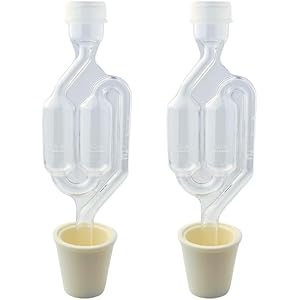Understanding Brettanomyces
Brettanomyces, often referred to as “Brett,” is a genus of yeast that plays a significant role in the fermentation process of various alcoholic beverages, particularly in the production of certain styles of beer and wine. This yeast is known for its unique ability to impart complex flavors and aromas, often described as funky, earthy, or even barnyard-like. Understanding the alcohol tolerance of Brettanomyces is crucial for brewers and winemakers who aim to harness its characteristics while managing fermentation effectively.
Alcohol Tolerance of Brettanomyces
The alcohol tolerance of Brettanomyces varies depending on the specific strain and environmental conditions. Generally, Brettanomyces can tolerate alcohol levels ranging from 8% to 12% ABV (alcohol by volume). Some strains have been reported to withstand even higher alcohol concentrations, making them particularly valuable in high-alcohol fermentations. This tolerance allows Brett to thrive in environments where traditional yeast strains may struggle, thus contributing to the complexity of the final product.
Factors Influencing Alcohol Tolerance
Several factors influence the alcohol tolerance of Brettanomyces, including the strain of yeast, fermentation temperature, and nutrient availability. Different strains exhibit varying levels of tolerance, with some being more resilient to high alcohol concentrations. Additionally, higher fermentation temperatures can stress the yeast, potentially impacting its ability to survive in elevated alcohol levels. Adequate nutrient levels, including nitrogen and vitamins, are also essential for maintaining yeast health during fermentation.
Role of Brettanomyces in Fermentation
Brettanomyces plays a unique role in fermentation, particularly in the production of sour beers and certain wines. Its ability to ferment sugars that other yeast strains cannot utilize allows it to contribute to the development of distinctive flavors and aromas. This characteristic is particularly sought after in styles such as lambics, saisons, and some red wines, where the presence of Brett can enhance the overall sensory profile of the beverage.
Impact on Flavor Profile
The alcohol tolerance of Brettanomyces is closely linked to its impact on the flavor profile of fermented beverages. As Brett ferments sugars, it produces various byproducts, including phenols and esters, which can lead to complex flavors. These flavors can range from fruity and spicy to earthy and funky, depending on the strain and fermentation conditions. Understanding how alcohol tolerance affects these flavor compounds is essential for brewers and winemakers aiming to achieve a desired taste.
Get more content like this!
Sign up to receive updates and new terms first hand.
Managing Brettanomyces in Brewing
For brewers, managing Brettanomyces during fermentation is crucial to ensure the desired outcome. Given its high alcohol tolerance, brewers must monitor fermentation closely to prevent over-attenuation, which can lead to excessively dry or overly funky beers. Techniques such as blending, controlling fermentation temperatures, and adjusting nutrient levels can help manage the influence of Brettanomyces and achieve a balanced final product.
Challenges with Brettanomyces
While Brettanomyces offers unique benefits, it also presents challenges for brewers and winemakers. Its ability to survive in high alcohol environments can lead to unpredictable fermentation outcomes, making it essential to have a thorough understanding of the yeast’s behavior. Additionally, Brett can be difficult to eliminate from equipment and barrels, leading to potential contamination in future batches. Proper sanitation and management practices are vital to mitigate these risks.
Applications in Craft Brewing
In the craft brewing industry, Brettanomyces has gained popularity for its ability to create distinctive and innovative beers. Many craft brewers experiment with Brett to develop unique flavor profiles and aromas that set their products apart. The versatility of Brettanomyces allows for a wide range of applications, from primary fermentation to barrel aging, making it a valuable tool for creative brewing.
Conclusion on Alcohol Tolerance
In summary, the alcohol tolerance of Brettanomyces is a critical factor that influences its role in fermentation and the overall flavor profile of alcoholic beverages. Understanding the specific strain, fermentation conditions, and management techniques can help brewers and winemakers harness the unique characteristics of Brett while maintaining control over the fermentation process. As the craft beverage industry continues to evolve, the knowledge of Brettanomyces and its alcohol tolerance will remain essential for producing exceptional products.




